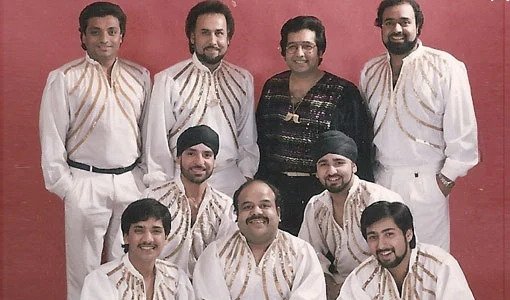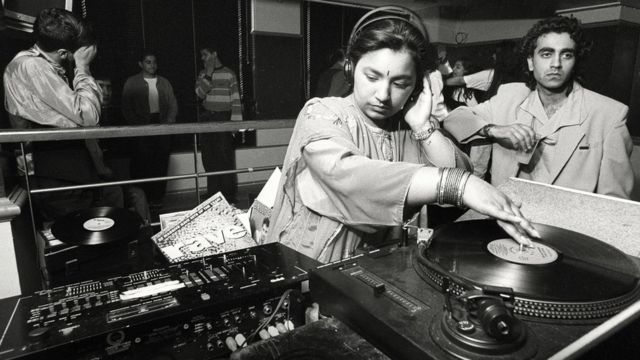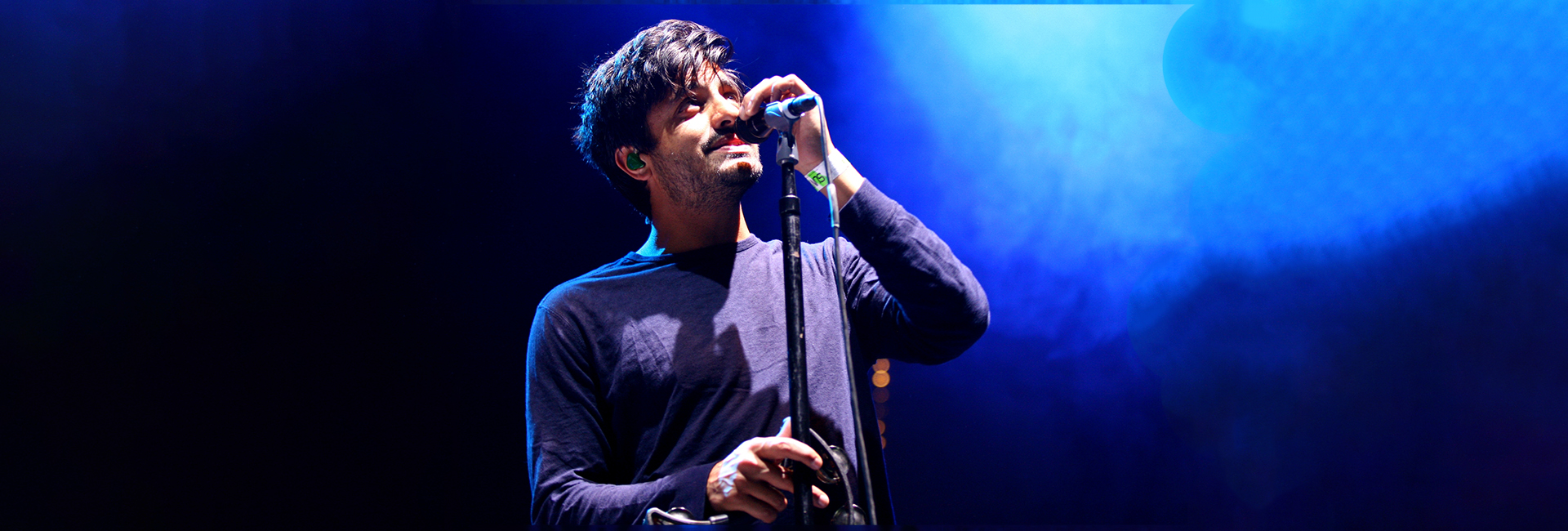(June 18, 2023) In the vibrant tapestry of British cultural history, an extraordinary phenomenon took root in the 1980s, spreading its melodious tendrils and captivating the hearts of British-South Asians grappling with the intricate web of identity in their newfound homeland. A harmonious fusion emerged as if to weave together the threads of their ancestral heritage and the pulsating rhythms of their adopted abode. Punjabi-Reggae Music, an enchanting symphony born from the union of two distinct worlds, emerged as a resplendent symbol of cultural representation.
Bringing Bhangra to the UK
As the children of the pioneers who ventured to the shores of the United Kingdom in the 1960s in search of work in London or Birmingham’s metal foundries, Punjabis carried with them an intangible gift, a precious consolation in the face of uprooted lives. This gift was none other than their indigenous music, a beacon of solace and celebration that reminded them of their agricultural lands in Punjab, a place that came to life during the harvest festival of Baisakhi, with men performing Bhangra to the beats of the dhol. The migration of rustic music to the West was not just a way to reminisce the life back home but also a symbol of cultural representation for the young South Asians trying to find their identity in a new land.
Around the same time, a surge in migration of Black African immigrants from Nigeria, Ghana, Uganda, Kenya, Zimbabwe, and South Africa gave way to the mingling of South Asians with them. The influence of Afro music – especially hip hop and reggae – on young South Asians gave birth to a new genre – Punjabi Reggae, thus forging an exhilarating path towards artistic redefinition. In the resounding fusion of Bhangra and the captivating cadences of reggae, an alchemical transformation occurred, breathing life into a cultural narrative long yearning to be heard.
Preserving Desi culture
The 1980s and 90s saw the arrival of Bhangra music in the UK, thanks to artists like Alaap, Heera, and Apache Indian who were fusing Punjabi folk music with hip hop. Bhangra music bands started spurting in the corners of the UK to preserve desi culture in Britain, and among them a Southall band Alaap was the forerunner of this new genre. Singer Channi Singh’s voice mixed Western beats and Punjabi lyrics made for a deadly combination, resulting in Alaap’s huge success in the 80s.

Bhangra band Alaap
The emergence of Daytime Discos
But with conservative parents at home, going to nightclubs and discos wasn’t an option for the young British Indians. This void gave birth to the concept of Daytime Discos, a cultural phenomenon that was a hit among the youth as they enjoyed dancing to music and made it home in time for evening tea. Hundreds of teenagers skipped schools and colleges to hear their favourite bands and DJs play at Daydiscos, and Bradford became the epicentre of the underground scene. Rani Kaur, who was popular as DJ Radical Sista in those days, told BBC, “At the time there was very little in terms of Asian cultural stuff in the mainstream, we would get the odd programme on TV but it was more geared to the older generation. There was a gap and there was a thirst for something to fill it, so daytimers just rocketed. It was about creating a new identity for Asians in the UK that had not existed before.”

DJ Radical Sista played at many Daytime discos in Bradford in the 80s. (Photo: Tim Smith)
While one could still get hold of the Bollywood records but finding a Bhangra record was a tough cookie to crack. So South Asians across Bradford came together to celebrate their culture and identity in the UK. Despite its success, the phenomenon was short-lived and lasted for about five-six years.
An identity shift
In the early 1990s, a group of young British Indians grappling with their identity confronted a unique solution within the confines of their garages: blending music. Caught between their British upbringing and their Indian heritage, these individuals pioneered a new sound known as British Bhangra music, which served as a bridge connecting both cultures. This musical fusion not only became a creative outlet but also played a pivotal role in shaping a bicultural identity. One man in the middle of this new phenomenon was Baljit Singh Sagoo aka Bally Sagoo, whose 1991 compilation Star Crazy put bhangra on the global music map. Fusing traditional Punjabi folk songs with reggae music is what made Laung Gwacha an instant hit. “This particular track (Laung Gwacha, feat. Rama & Cheshire Cat) was a Punjabi reggae song, it was an experiment, where the Asian kids went crazy and everybody thought we need some stuff like this.”
Growing up in Birmingham, Sagoo was heavily influenced by the vibrant black music scene that surrounded him, encompassing genres such as hip-hop, soul, and reggae. This diverse musical environment left an indelible mark on his compositions. During this time, young British Indians discovered a newfound sense of identity through the emergence of Punjabi reggae music. Another notable figure making waves in the music industry with his fusion of Punjabi reggae was songwriter-singer and DJ Steven Kapoor, known as Apache Indian. Songs like Chock There and Boom Shack A Lak became anthems for the MTV generation, blending reggae with bhangra. “When I first went into the studio, I didn’t want it to be just reggae, so we put a bit of the Punjabi rhythm in there – the first-time bhangra was being fused musically, just like our lifestyles,” Apache told the Guardian.

Steven Kapur aka Apache Indian
The popularity of the genre gave way to new singers and artists who not only became popular in the UK but created a stir back in India too. As the British-Asian population expanded and diversified around the mid-90s, it was Bhangra that kept the communities together. “The eighties London sound was a bit more innovative, open to Hindi and other Asian music, whereas Birmingham was desi because the community was solid, Punjabi and Sikh. It had an authentic rawness whereas London’s was more poppy popular. Today, a lot more kids in London are sampling grime and hip hop and doing remixes of bhangra classics than in the Midlands,” Bobby Friction told the daily.
British Bhangra music embarked on a remarkable journey that began in the 1970s when it first arrived on the shores of Britain. Initially, it catered primarily to the South Asian diaspora, but its infectious rhythms and captivating melodies soon resonated with a wider audience. By the 1980s and 1990s, British Bhangra had reached its pinnacle when it took the form of Punjabi Reggae, captivating both British and global music enthusiasts.

This unique genre not only provided a soundtrack for celebration and cultural expression but also became a lifeline for young British Indians searching for a sense of identity. It bridged the gap between their British upbringing and their Indian heritage, offering a harmonious blend of sounds that reflected their bicultural experiences. Its influence reverberated throughout the music industry, permeating genres and captivating listeners worldwide well into the 2000s. Its legacy continues to inspire and enrich the musical landscape, a testament to the power of cultural fusion and the universal language of music.




